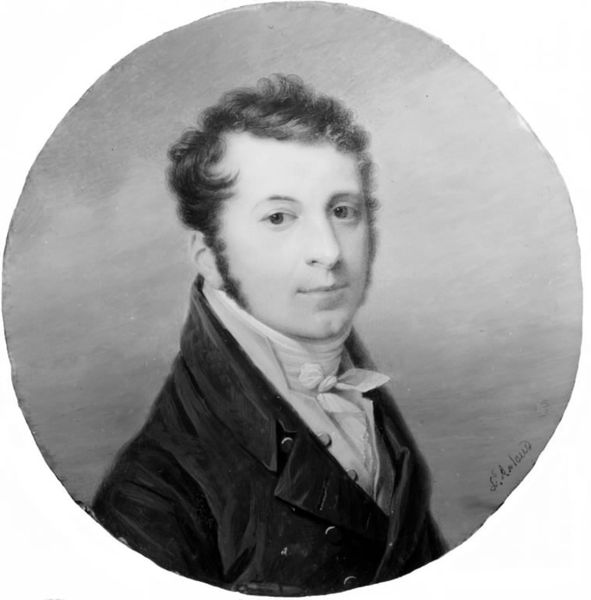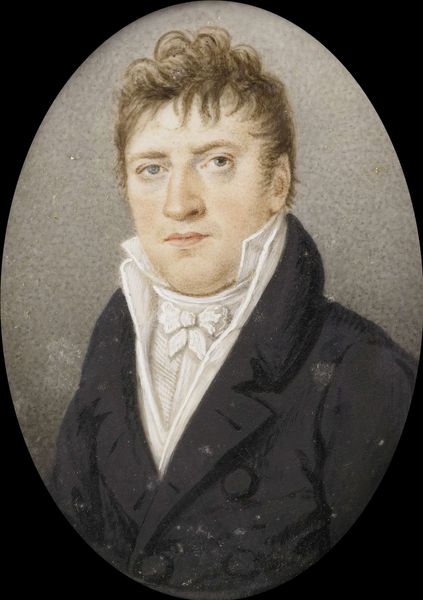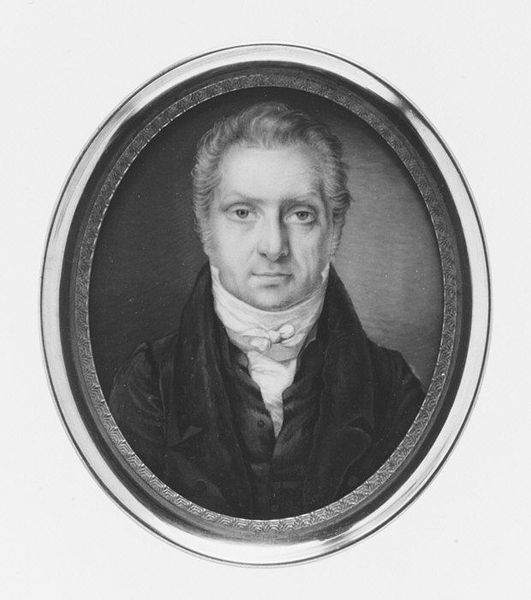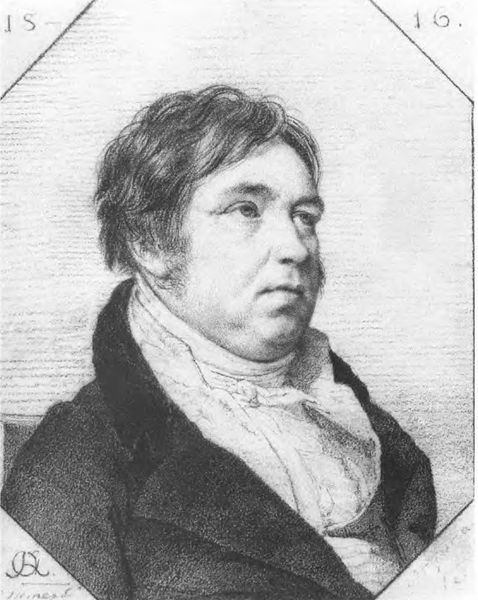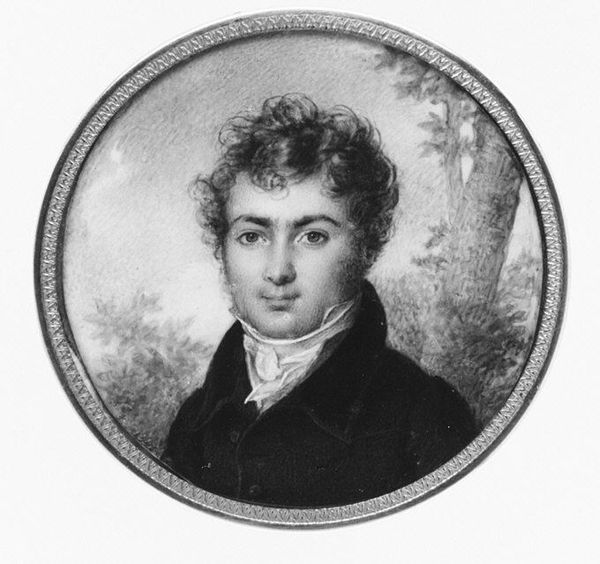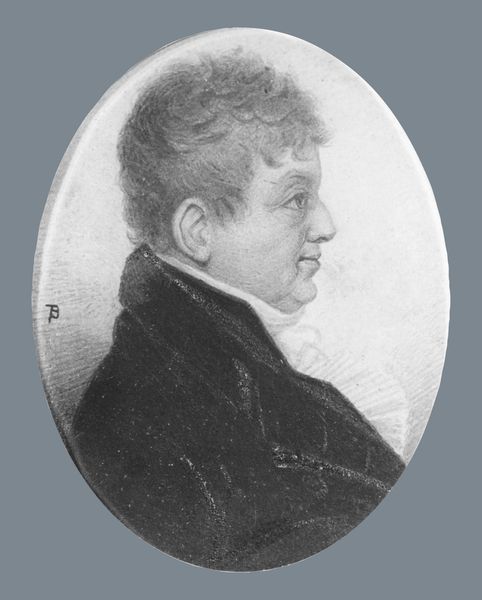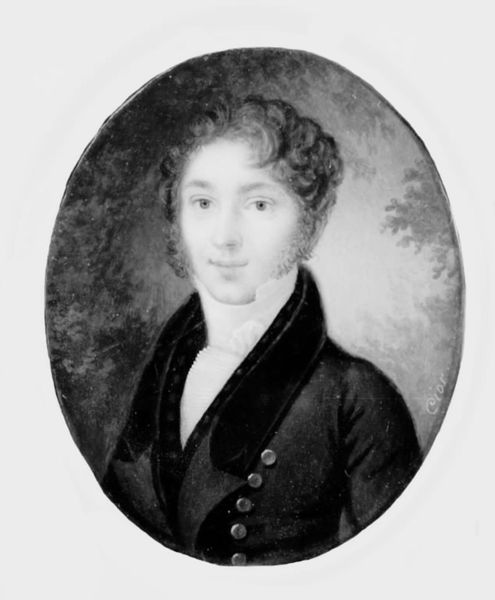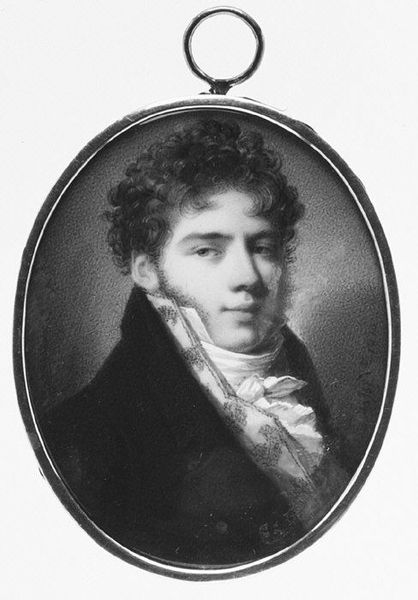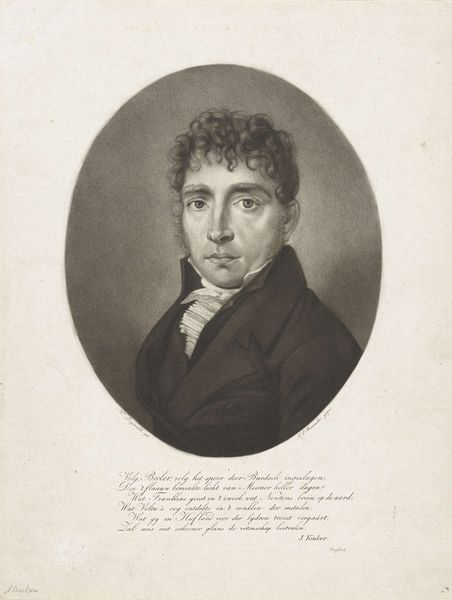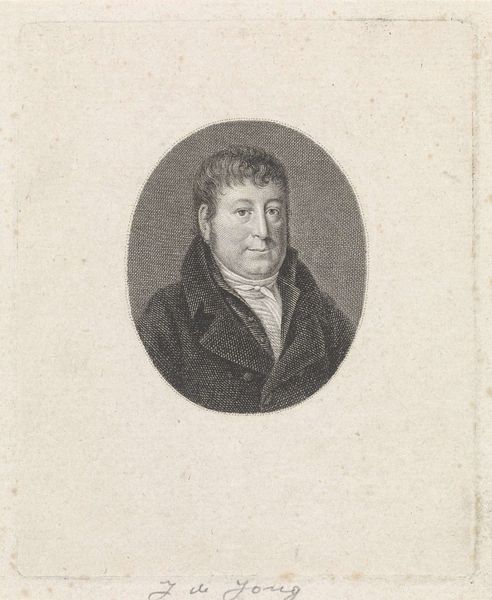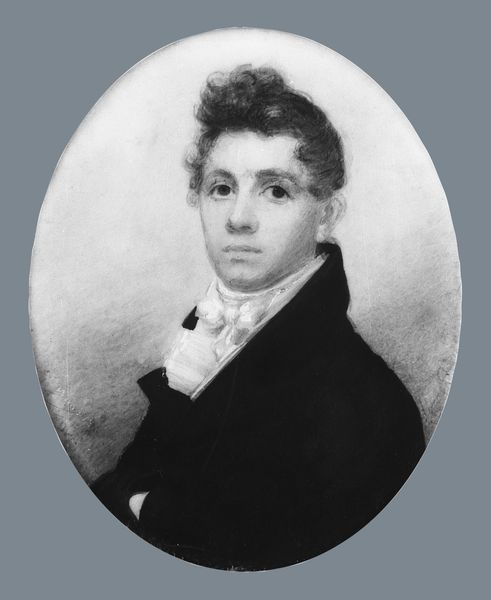
painting, oil-paint, canvas
#
neoclacissism
#
portrait
#
painting
#
oil-paint
#
canvas
#
black and white
#
realism
Dimensions: 70.5 cm (height) x 55 cm (width) (Netto)
Curator: Here we see a compelling portrait in oil on canvas, known as "Mandsportræt," painted in 1814 by C.A. Lorentzen. It currently resides at the SMK, the Statens Museum for Kunst. Editor: There’s something intensely private about this image; he seems caught between a formality suggested by the clothes and some very unkempt hair, softened almost into informality with his subtle smile. Is it just the black and white palette that draws me in? Curator: The subdued palette definitely emphasizes form, calling back to neoclassical ideals – a kind of purified realism, emphasizing moral and civic virtue through simplicity. Notice how the face, particularly the gaze, emerges as the focal point because of the tonal restraint. What do you read in the eyes? Editor: A kind of skeptical amusement, actually. He's well-dressed, but that ruffled hair suggests a resistance to the rigid societal norms that neoclassical art typically upheld. The symbolism is fighting itself here. A well-read and free man caught up in societal obligation perhaps? Curator: The Neoclassical period following the tumult of revolution often did this sort of ideological dance. Lorentzen was a professor at the Academy, a firm proponent of the establishment, but it is possible to detect notes of dissent, even counter-Enlightenment thought through his presentation of the model’s persona. It's visible, as you suggest, in the ambivalence around the clothing and hair; It could represent anxieties among the bourgeois class concerning the changes wrought by war, politics, and industry. Editor: So, Lorentzen's adherence to Neoclassical ideals, even in monochrome, gives this image the visual language of authority. It elevates the sitter but also places him as part of history itself – a moment in time. The context makes it. Curator: Yes, in that era, painting like this was itself a statement, an appeal to lasting values amid turbulent change. An interesting commentary on its political landscape. The portrait format inherently suggests something – or someone – worth preserving. Editor: It's striking how this restrained, classical approach inadvertently reveals such complex social tensions. It leaves one thinking not only about the sitter but about the period as a whole, the visual weight of the art on public perception.
Comments
No comments
Be the first to comment and join the conversation on the ultimate creative platform.
